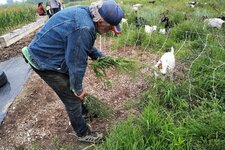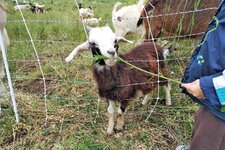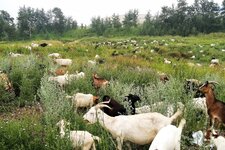Rode from Old Town Folsom, just East of Sacramento, up to Beals Point State Park on Folsom Lake, and then back down to the Johnny Cash trail past Folsom Prison. Had our sack lunches on Folsom's Humbug/Willow Creek trail. We usually do this on our mech bikes. The grade up to Beals Point goes on for several miles and can be a real leg burner. The electrics were wonderful! Ended up with a pleasant 22 mile ride with 1,161 feet of climbing. Kept the speed down again to minimize power usage. Averaged 11 mph with 5.2Wh/mile. More than last week's Tahoe ride, but that climb to Folsom...
The restored historic bridge connects Old Town to the American River Bike Trail. This trail runs 32.5 miles from Beals Point to Old Town Scaramento. A very pretty ride, mostly along the river with paved trails the entire way.
The restored sign over the brige says;
"$5 FINE FOR DRIVING OVER THE BRIDGE
FASTER THAN A WALK
$25 FINE FOR DRIVING MORE THAN
20 HEAD OF HORSES, 50 HEAD CATTLE
OR 200 SHEEP, HOGS, OR GOATS
OVER THIS BRIDGE AT ONE TIME"
It doesn't say what the limit is for cyclists




